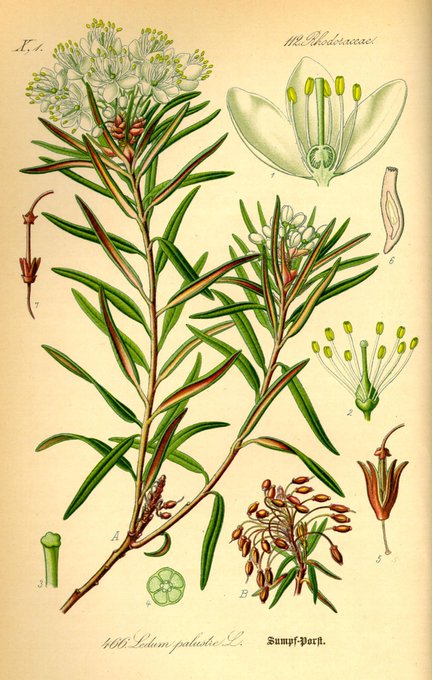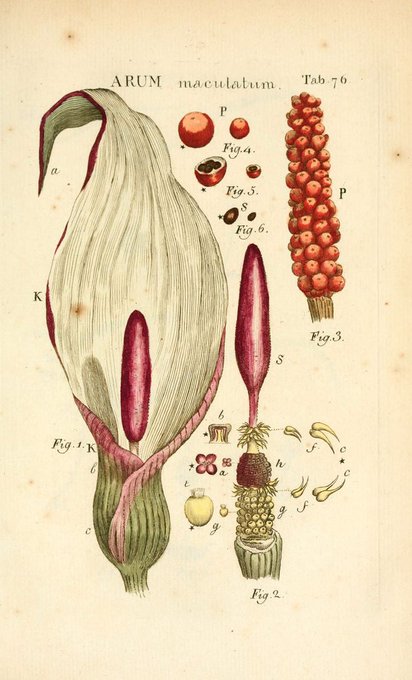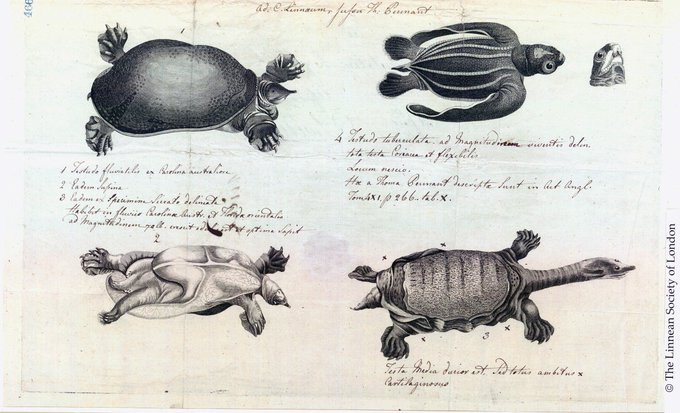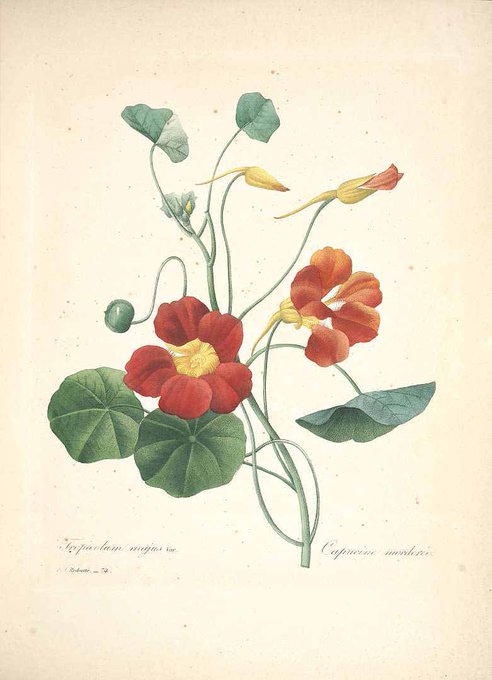LinnaeusのTwitterイラスト検索結果。 85 件中 4ページ目
#OTD (June 13 OS), #Linnaeus rode from Persnäs to Gaxa where Argentina anserina (silverweed/gåsört) & Senecio vulgaris (groundsel/korsört) grew on beach.; cinnabar moth (karminspinnare) caterpillars were feeding on the latter. https://t.co/c28r3KDjGe
#OTD (May 26 OS), #Linnaeus was shown #stinkhorn (#Phallus impudicus; a scarce #fungus found in #Småland by a local doctor). Boys were eating #Pinus sylvestris #sapwood as a snack; he extolled its virtues as a #medicinal plant. Then he saw #nightjars (#Caprimulgus europaeus).
Anders Dahl–died #OTD 1789, aged 38–was interested in botany from an early age & co-founded The Swedish Topographic Society in Skara. The dahlia was named after him, an honour wrongly thought to have been bestowed on him by Carl Linnaeus of whom he was a pupil.
#OTD (May 19 OS/30 NS), #Linnaeus stayed in #Norrköping (no horses) - but still listed #plants! He saw factories for #sugar (#sugarcane), cloth (#Dipsacus; #Serratula/#Reseda/#Arctostaphylos/#dyeplants) & #tobacco (#Nicotiana). #Fritillaria, #Primula & #Portulaca in gardens.
#OTD (May 17 OS/28 NS, 1741) in Nyköping, #Linnaeus focused on industry in (flour, paper, rolling mills; brass foundery), herbal remedies (#Rhododendron tomentosum - against #lice) and #poisonousplants (#Oenanthe) #economicbotany
(Incidentally, both Sauvages and Linnaeus appear to have been acting on a suggestion of the great English physician Thomas Sydenham, who wrote that...
For #BurnsNight2019 we've found this beautiful hand-coloured plate of thistles. Believed to have hung on Linnaeus' wall, the plate was given to Linnaeus by Johannes Gessner c.1764 https://t.co/co8cg5Zn7V
Botanical illustration and the park: Thirty-eight plates, with explanations : intended to illustrate Linnaeus's System of vegetables, and particularly adapted to the Letters on the elements of botany, 1817 .....https://t.co/gFw4TBfuOw from Biodiversity Heritage Library........
Merian’s work was executed with such accuracy and detail that later scientists, including Linnaeus, would use it to describe 100 species, including the tarantula.
Story: https://t.co/NYPJPpWOt7
John Miller's "Illustratio systematis sexualis Linnaeani", initially issued in 20 parts from 1770-1777 to 85 subscribers, attempted to illustrate Linnaeus' sexual system for plant classification. View the 1789 ed. in #BHLib via @HarvardLibrary @NYBG: https://t.co/8GyHqkvyb0
And the #UPickSciArt winner is? 🥁
Sloths!
You voted, we deliver.
L: Linnaeus's two-toed sloth (Choloepus didactylus). R: Hoffmann's two-toed sloth (C. hoffmanni). #SciArt by J.G. Keulemans in Proceedings of the @OfficialZSL (1872) via @NHM_Library: https://t.co/LL5IryIg2s
Carl Linnaeus was born #otd in 1707. Have you seen our Linnean Correspondence collection? https://t.co/hVGANf40XU We have digitised letters sent & received by the great man himself. To also celebrate #WorldTurtleDay, we have found this letter sent to him by Thomas Pennant.
Maria Sibylla Merian created gorgeous scientific illustrations--like this one featuring guava & a tiger butterfly. Linnaeus used her images to help inform his work, but her legacy is comparably unknown to his. Our new YA bio explores her life and art: https://t.co/cS81MmsMaf
Today we celebrate Botanist Elisabeth Christina von Linne (Linnaeus). She is the 1st white female botanist in Sweden & the 1st to describe the optic phenomenon of "flashing flowers", now named the Elizabeth Linnaeus Phenomenon.
https://t.co/oQzs9h5Vbx
From "Description des plantes d'Amérique" by Plumier (1693) & "Species Plantarum" by #Linnaeus (1753) to date, #Passiflora laurifolia is still stirring discussions.
A new lectotype proposed in research just published with us: ttps://doi.org/10.3897/phytokeys.95.22324 #Botany
Kitty Linnaeus wants to remind you there's not much time left on our #kickstarter! https://t.co/LsGmUIMY3F #visualnovel #yaoi #boyslove #bl
In 1707 botanist Carolus #Linnaeus was born. Flowers! #otd Check this wonderful book by RJ Thornton online: https://t.co/hWAhIBjnSf





















































